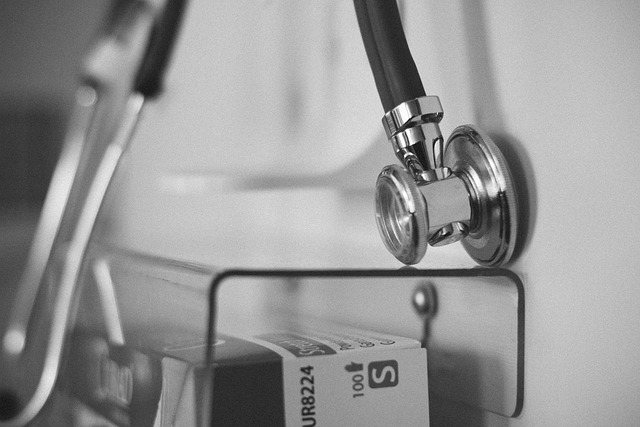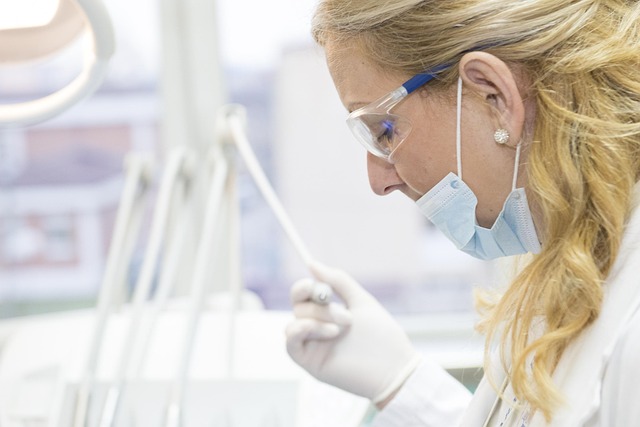Enhance problem-solving by using select diagnostic tools to assess skills, identify weaknesses, and guide tailored strategies. Incorporate remote monitoring, non-invasive testers, practice scenarios, and learn from failures. Embrace diverse approaches, creative techniques, and specific challenge-tailored tools. Apply learned skills through real-world scenarios with various diagnostic tools for practical proficiency.
Enhancing problem-solving abilities is a valuable skill in today’s fast-paced world. This article guides you through a comprehensive approach, from identifying weaknesses and exploring diagnostic tools to practicing scenarios and learning from mistakes. We delve into creative thinking techniques and emphasize the crucial step of applying solutions in real-world situations. By utilizing select diagnostic tools, you’ll gain valuable insights and refine your problem-solving strategies effectively.
- Identify Weaknesses: Assess Current Problem-Solving Skills
- Choose Tools: Explore Diagnostic Options for Insight
- Practice Scenarios: Enhance Abilities Through Case Studies
- Learn from Mistakes: Analyze Failures to Improve Strategies
- Diversify Approaches: Incorporate Creative Thinking Techniques
- Apply in Real-World: Test and Refine Solutions in Diverse Situations
Identify Weaknesses: Assess Current Problem-Solving Skills

To enhance problem-solving abilities, the first step is to assess where you stand currently. Identify weaknesses in your skill set by evaluating your current problem-solving capabilities using diagnostic tools. These can range from handheld diagnostic devices used in otolaryngology screening equipment for medical professionals, to online health assessment platforms accessible to a broader audience. By selecting appropriate diagnostic tools, you gain valuable insights into areas that require improvement.
This self-assessment process involves analyzing past performances, reflecting on challenges faced, and understanding the types of problems you typically encounter. It’s crucial to be honest about your strengths and weaknesses so that targeted efforts can be made to strengthen problem-solving in areas of need. This foundational step ensures that any strategies or training implemented are tailored to address specific gaps, ultimately leading to more effective problem-solving in the future.
Choose Tools: Explore Diagnostic Options for Insight

When enhancing problem-solving abilities, selecting the right tools is key. One effective strategy involves exploring various diagnostic options to gain deeper insights into challenges at hand. Start by considering remote patient monitoring devices—these enable continuous tracking of vital signs and health metrics, providing a comprehensive view of an individual’s well-being. Such tools can help identify subtle changes or trends that might be missed through traditional methods.
Additionally, incorporate non-invasive health assessment tools for accurate, convenient evaluations. These range from home-use diagnostic testers for specific conditions to advanced body composition analyzers. By leveraging these select diagnostic tools, you gain access to precise data, facilitating more informed decision-making and ultimately leading to better problem-solving outcomes.
Practice Scenarios: Enhance Abilities Through Case Studies

Practice scenarios play a pivotal role in enhancing problem-solving abilities. By engaging with case studies, individuals and teams can apply theoretical knowledge to real-world challenges. This hands-on approach allows for critical thinking, creative solutions, and adaptive learning. For instance, healthcare professionals can utilize specialized testing equipment and symptom checking applications to diagnose complex cases, thereby improving diagnostic accuracy and patient outcomes.
Moreover, incorporating renal monitoring systems into these scenarios enables a deeper understanding of physiological processes and the impact of interventions. By selecting appropriate diagnostic tools, participants learn to interpret data effectively, make informed decisions, and implement evidence-based strategies. This immersive experience not only bolsters problem-solving skills but also fosters a culture of continuous improvement and innovation.
Learn from Mistakes: Analyze Failures to Improve Strategies

Learning from mistakes is a vital aspect of enhancing problem-solving abilities. When strategies fail, it’s crucial to conduct a thorough analysis rather than simply disregarding the outcome as a loss. Every mistake offers valuable insights that can refine and improve future approaches. By examining what went wrong, you identify areas for improvement and develop more effective solutions. This process involves using select diagnostic tools tailored to specific challenges; for instance, dermatological examination devices aid in analyzing skin-related issues, while portable clinical analysis instruments provide quick and accurate assessments in various medical fields.
In problem-solving, adopting a strategic mindset is key. Instead of fearing failures, view them as opportunities to learn and grow. Utilize oncology diagnostic aids or similar tools that enable comprehensive evaluations, helping you pinpoint precise areas for adjustment. This analytical approach fosters continuous improvement, ensuring that each failure leads to more robust and successful problem-solving in the future.
Diversify Approaches: Incorporate Creative Thinking Techniques

To enhance problem-solving abilities, it’s crucial to diversify your approaches and incorporate creative thinking techniques. This involves stepping beyond conventional methods and exploring unconventional avenues for solutions. Techniques such as mind mapping, lateral thinking puzzles, and design thinking can help stimulate new perspectives and foster innovative ideas. By engaging in these activities, individuals not only broaden their thought processes but also develop the flexibility to adapt their strategies based on diverse scenarios.
Diversifying problem-solving methods further involves selecting and utilizing diagnostic tools that align with the specific challenge at hand. Handheld diagnostic devices, for instance, offer portable solutions for real-time data collection, while allergen detection systems are invaluable in medical or environmental settings where identifying allergens is paramount. Vital signs monitors also play a critical role in healthcare by providing continuous tracking of essential bodily functions, enabling prompt interventions when necessary.
Apply in Real-World: Test and Refine Solutions in Diverse Situations

After honing your problem-solving skills through various exercises and strategies, it’s time to apply them in real-world scenarios. One effective approach is to utilize diagnostic tools designed for practical application. These tools can range from symptom checking applications that aid in identifying potential health issues based on user input, to more comprehensive online health assessment platforms offering detailed analyses. Even specialized renal monitoring systems can benefit from this hands-on experience, allowing you to test and refine solutions in diverse situations.
By engaging with these tools, you gain valuable experience navigating complex problems and making informed decisions. Each scenario presents unique challenges, encouraging critical thinking and creative problem-solving. Over time, this iterative process sharpens your ability to adapt and optimize solutions, ensuring that theoretical knowledge translates into practical proficiency.
By combining self-assessment with strategic tools like those mentioned, individuals can significantly enhance their problem-solving abilities. Practicing case studies, learning from failures, and incorporating creative thinking all contribute to a robust problem-solving toolkit. Remember that continuous testing and refinement in diverse real-world scenarios are key to mastering this vital skill set. Select appropriate diagnostic tools to gain deeper insights and foster personal growth in navigating complex challenges.
